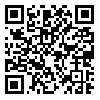1. Bacon, S. M. (1989). Listening for Real in the Foreign-language Classroom. Foreign Language Annals, 22(2), 543-551. http://dx.doi.org/10.1111/j.1944-9720.1989.tb02781.x [
DOI:10.1111/j.1944-9720.1989.tb02781.x]
2. Berardo, S. A. (2006). The Use of Authentic Materials in the Teaching of Reading. The Reading Matrix, 6(2), 47-52.
3. Breen, M. P. (1985). Authenticity in the Language Classroom. Applied Linguistics, 6, 60–70. [
DOI:10.1093/applin/6.1.60]
4. Byrnes, H. (1984). The Role of Listening Comprehension: A theoretical Base. Foreign Language Annals, 17, 317-329. [
DOI:10.1111/j.1944-9720.1984.tb03235.x]
5. Celce-Murcia, M. (2001). Teaching English as a Second or Foreign Language. Boston: Heinle & Heinle.
6. Cook, V. (2000a). Second Language Learning and Language Teaching. Beijing: Foreign Language Teaching and Research Press.
7. Goh, C. C. M. (2002). Exploring Listening Comprehension Tactics and Their Interaction Patterns. System, 30(2), 185-206. [
DOI:10.1016/S0346-251X(02)00004-0]
8. Goh, C., & Yusnita, T. (2006). Metacognitive Instruction in Listening for Young Learners. ELT Journal, 60(3), 222–232. [
DOI:10.1093/elt/ccl002]
9. Field, J. (1998). Skills and Strategies: toward a New Methodology for Listening. ELT Journal, 52(2), 110–118. [
DOI:10.1093/elt/52.2.110]
10. Hamouda, A. (2013). An Investigation of Listening Comprehension Problems Encountered by Saudi Students in the EL Listening Classroom. International Journal of Academic Research in Progressive Education and Development, 2(2), 113-15.
11. McDonough, S. (1999). Learner Strategies. Language Teaching, 32, 1-18. [
DOI:10.1017/S0261444800013574]
12. Paulston, C. B., & Bruder, M. N. (1976). Teaching English as a Second Language: Techniques and Procedures. Cambridge, MA: Winthrop.
13. Pourhosein, G. A., & Ahmadi, S. M. (2011). The Effect of Text Familiarity on Iranian EFL Learners' Listening Comprehension. Journal of Language Teaching and Research, 2(4), 783-789.
14. Pourhosein Gilakjani, A., & Sabouri, N. B. (2016). Learners' Listening Comprehension Difficulties in English Language Learning: A Literature Review. English Language Teaching, 9(6), 123-133. [
DOI:10.5539/elt.v9n6p123]
15. Purdy, M. (1997). What Is Listening? In M. Purdy & D. Borisoff (Eds.), Listening in Everyday Life: A Personal and Professional Approach (2nd ed.) (pp. 1-20). Lanham, MD: University Press of America.
16. Richards, J. C., & Schmidt, R. (2002). Longman Dictionary of Language Teaching and Applied Linguistics. Oxford: Pearson Education Limited.
17. Rogers, C. V., & Medley, F. W. J. (1988). Language with a Purpose: Using Authentic Materials in the Foreign Language Classroom. Foreign Language Annals, 21, 467-478. [
DOI:10.1111/j.1944-9720.1988.tb01098.x]
18. Secules, T., Herron, C., & Tomasello, M. (1992). The Effect of Video Context on Foreign Language Learning. Modern Language Journal, 76, 480-490. [
DOI:10.1111/j.1540-4781.1992.tb05396.x]
19. Underwood, M. (1989). Teaching Listening. London: Longman.
20. Vandergrift, L. (2003). Listening: Theory and Practice in Modern Foreign Language Competence. Retrieved November 13, 2016, from http://www.llas.ac.uk/resources/gpg/67
21. Yang, C. (2009). A Study of Metacognitive Strategies Employed by English Listeners. International Educational Studies, 2(4), 134-139. [
DOI:10.5539/ies.v2n4p134]






